By Bob Hicks
Lots going on in Puddletown this weekend for urban naturalists and aesthetic anthropologists to ogle, from Lucinda Childs‘ migratory Dance opening Thursday at White Bird, to Wordstock, where the abundant literatus scribbilus flock every fall, to the drowsy yet ravishing and oddly energetic Sleeping Beauty at Oregon Ballet Theatre.
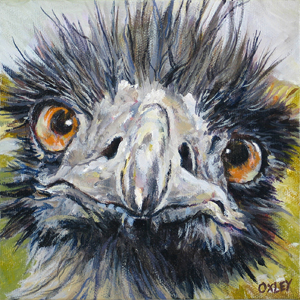 But for adventurers who really like to see exotic creatures in their natural surroundings, there’s nothing quite like the annual Portland Open Studios, a two-weekend affair (October 9-10 and 16-17) in which 100 of the closely related species artistus Americanus and finecrafter raris domesticus throw open the doors to their work spaces.
But for adventurers who really like to see exotic creatures in their natural surroundings, there’s nothing quite like the annual Portland Open Studios, a two-weekend affair (October 9-10 and 16-17) in which 100 of the closely related species artistus Americanus and finecrafter raris domesticus throw open the doors to their work spaces.
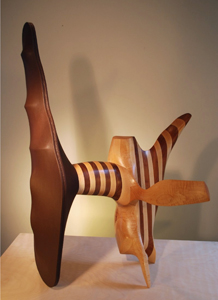 Endangered or not, these rugged and often generous creatures invite students and enthusiasts to see not just what they create, but also how and where they go about it. Mr. Scatter wrote about last fall’s sightings here.
Endangered or not, these rugged and often generous creatures invite students and enthusiasts to see not just what they create, but also how and where they go about it. Mr. Scatter wrote about last fall’s sightings here.
The Open Studios tour carries a certain outsider allure. Some of the names will be familiar to devotees of the more thoroughbred artistus gallerus scene, in which creatures hand-picked by commercial experts are displayed in handsome settings to large crowds.
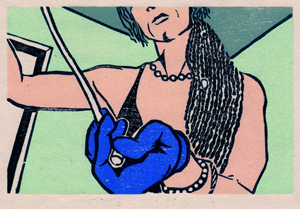 Indeed, several onetime (and even current) Open Studios participants have moved along to major gallery representation. For a variety of reasons — subject matter, chosen media, natural conservatism, newness to the scene, luck of the draw, just plain level of talent — a lot of others haven’t.
Indeed, several onetime (and even current) Open Studios participants have moved along to major gallery representation. For a variety of reasons — subject matter, chosen media, natural conservatism, newness to the scene, luck of the draw, just plain level of talent — a lot of others haven’t.
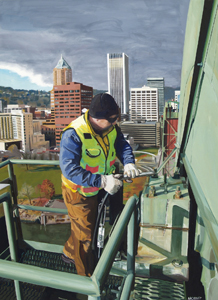 That means a few things. First, you might see some things that don’t exactly float your boat — but then, that’s likely to happen on any given tour of the commercial galleries, too. Second, you might get a healthy reminder of the breadth of any city’s art scene, where what the artists themselves do is inevitably more varied than what the galleries can show. Third, you get a peek at the process. Fourth, you might actually discover something you really like, and — who knows? — maybe even buy it.
That means a few things. First, you might see some things that don’t exactly float your boat — but then, that’s likely to happen on any given tour of the commercial galleries, too. Second, you might get a healthy reminder of the breadth of any city’s art scene, where what the artists themselves do is inevitably more varied than what the galleries can show. Third, you get a peek at the process. Fourth, you might actually discover something you really like, and — who knows? — maybe even buy it.
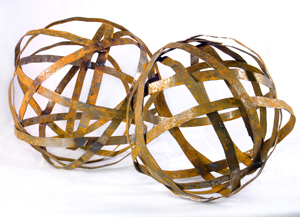 To many amateur artithologists members of these species seem romantic and mysterious, and certainly nature often garbs them in splendid finery. But the true student understands that most of these creatures also live their lives close to the ground.
To many amateur artithologists members of these species seem romantic and mysterious, and certainly nature often garbs them in splendid finery. But the true student understands that most of these creatures also live their lives close to the ground.
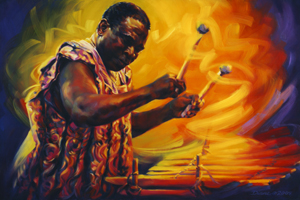 They’re concerned with the basics of survival, developing sometimes truly clever techniques to feed and shelter themselves. Seeing them in their native habitats — their studios — teaches that the most successful individuals are hard-working, focused, and skilled.
They’re concerned with the basics of survival, developing sometimes truly clever techniques to feed and shelter themselves. Seeing them in their native habitats — their studios — teaches that the most successful individuals are hard-working, focused, and skilled.
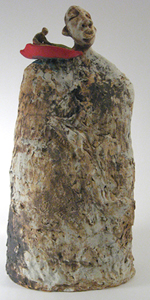 Another advantage to taking the tour, and spreading it out over both weekends, is that it can get you into territories you don’t ordinarily explore. The studios are spread all over the metro area, from North Portland to Beaverton. Often they come in clusters, so you can park your car and catch several specimens on foot. This year’s jurors — Jef Gunn, Horatio Law, Laura Russell — are a good lot. The best way to see what they’ve been up to is to visit the Portland Open Studios Web site and check the list of places to buy a tour guide. They cost $15 and come with a map and two adult tickets (kids are free), enclosed in a 16-month wall calendar that includes a photo of each artist’s work. Grab your binoculars and scatter out into the field!
Another advantage to taking the tour, and spreading it out over both weekends, is that it can get you into territories you don’t ordinarily explore. The studios are spread all over the metro area, from North Portland to Beaverton. Often they come in clusters, so you can park your car and catch several specimens on foot. This year’s jurors — Jef Gunn, Horatio Law, Laura Russell — are a good lot. The best way to see what they’ve been up to is to visit the Portland Open Studios Web site and check the list of places to buy a tour guide. They cost $15 and come with a map and two adult tickets (kids are free), enclosed in a 16-month wall calendar that includes a photo of each artist’s work. Grab your binoculars and scatter out into the field!
*
ILLUSTRATIONS, from top:
- “Born to Run,” acrylic on panel, Harold Oxley
- “Failure of Flight,” wood and canvas, Thomas Soule
- “I-chele Sux,” woodblock, Carole Zoom
- “Greasing Hawthorne Bridge,” oil on paper, Christopher Mooney
- “Steel Knitting,” steel, Jill Torberson
- “Obo Addy,” oil, Diane Russell
- “In the Dreamtime,” ceramic, Pamela Grow